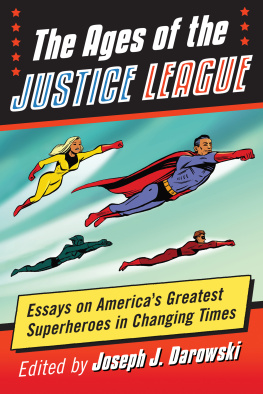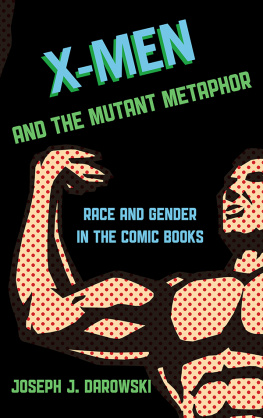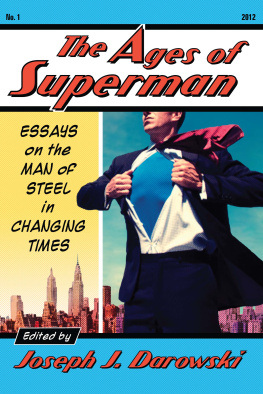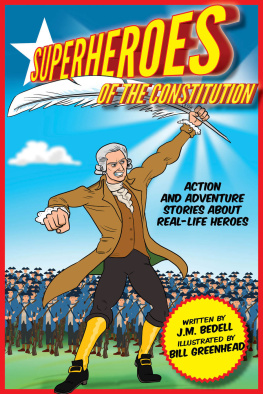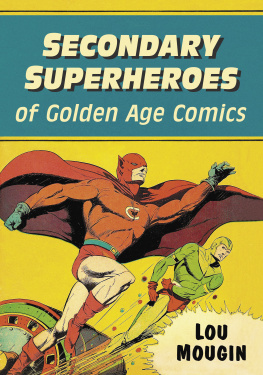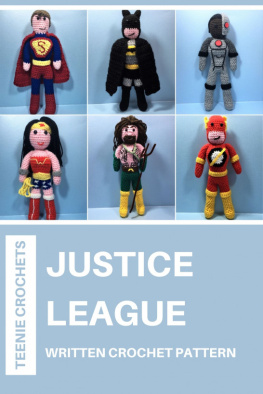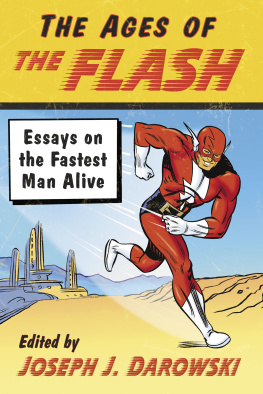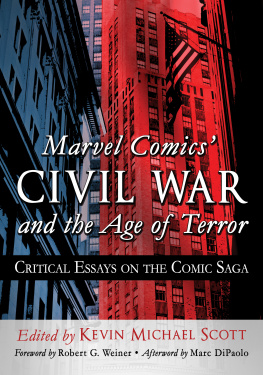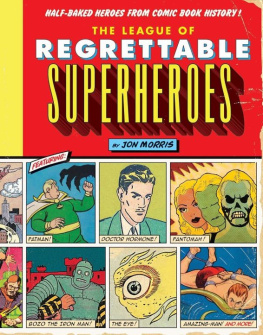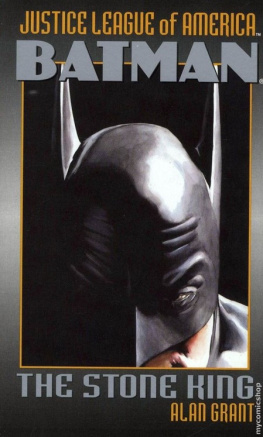
ALSO EDITED BY JOSEPH J. DAROWSKI
AND FROM MCFARLAND
The Ages of the Incredible Hulk: Essays on the Green Goliath in Changing Times (2016)
The Ages of Iron Man: Essays on the Armored Avenger in Changing Times (2015)
The Ages of Wonder Woman: Essays on the Amazon Princess in Changing Times (2014)
The Ages of the X-Men: Essays on the Children of the Atom in Changing Times (2014)
The Ages of the Avengers: Essays on the Earths Mightiest Heroes in Changing Times (2014)
The Ages of Superman: Essays on the Man of Steel in Changing Times (2012)
The Ages of the Justice League
Essays on Americas Greatest Superheroes in Changing Times
Edited by JOSEPH J. DAROWSKI

McFarland & Company, Inc., Publishers
Jefferson, North Carolina
LIBRARY OF CONGRESS CATALOGUING DATA ARE AVAILABLE
BRITISH LIBRARY CATALOGUING DATA ARE AVAILABLE
e-ISBN: 978-1-4766-2707-6
2017 Joseph J. Darowski. All rights reserved
No part of this book may be reproduced or transmitted in any form or by any means, electronic or mechanical, including photocopying or recording, or by any information storage and retrieval system, without permission in writing from the publisher.
Front cover illustration 2017 DigitalVision
McFarland & Company, Inc., Publishers
Box 611, Jefferson, North Carolina 28640
www.mcfarlandpub.com
To Trixie Smith
thanks for helping me figure out
this essay collection thing.
Preface
The Justice League of America. The Justice League. JLA. Justice League International. Justice League Europe. Justice League Dark. Justice League: Task Force. Young Justice. Super Friends. Justice League Unlimited.
Without a doubt, DC Comics Justice League is one of the most important properties in popular culture history. There is the undeniable staying power of the initial concept of uniting DC Comics most powerful characters into a single team, but there is also the fact that imitation from competitors is at least partially responsible for the rise of Marvel Comics superhero universe. Comic books, television cartoons, live action series, blockbuster films, and huge amounts of merchandise all owe a debt to the Silver Age launch of the Justice League. In a world where our popular landscape includes film universes and television series with intersecting characters, the Justice League is a key part of our entertainment industrys legacy and future.
The comic book industry saw a boom period that has come to be called the Golden Age of Comics when Superman and other costumed heroes found huge audiences in the late 1930s and 1940s. Eventually, several of these characters joined together as a team called the Justice Society of America. In the latter half of the 1940s other genres rose in popularity as interest in superheroes waned, and most comic book series featuring the crime fighting adventures of superpowered characters were phased out by publishers.
Legendary DC Comics editor Julius Schwartz launched the Silver Age of Comic Books when his company reintroduced Golden Age characters with the same superhero names but new origins and secret identities, starting with the Flash in 1956. After seeing readers respond favorably to new versions of individual characters, it was a natural extension of the strategy to re-imagine and reintroduce the first superhero team in American comic books. In updating a 1940s series for the 1960s, the name was changed from the formal-sounding Justice Society to the bolder Justice League. Writer Gardner Fox and artist Mike Sekowsky launched the team in 1960, and the franchise has been one of the mainstays for DC Comics ever since.
As with any decades-long property that has had dozens of creators and editors guiding the stories, there have been many different interpretations of the Justice League. This essay collection features 17 essays by scholars who have performed close readings of comic book stories from different eras of the Justice League. The goal of this book is to demonstrate connections between the time period when these stories were being produced and the themes found in the comic books. These themes can be found in the types of villains being fought, the characteristics of members of the team, the messages found in the stories, or the general tone of the tales. Many talented writers, artists, colorists, letterers, and editors were involved in the creation of these comic books, and their work is naturally a product of their times. Highlighting the relationship between a society and the entertainment that is produced and consumed in a given era illuminates the enduring significance of these popular culture products.
The first essay in the collection considers some of the very earliest stories of the Justice League, before the team even had their own comic book title. In The Brave and Bold Beginning of the Silver Age Superteam John Darowski looks at several Justice League stories that appeared in The Brave and the Bold. He identifies several threats to the Cold War American identities that are explored in the Justice Leagues battles, including issues involving atomic weapons, scientists, and the nuclear family.
Louie Dean Valencia-Garca explores the manner in which the Justice League begins to act as a surrogate family for its members. A League of Orphans and Single Parents: Making a Family in an Era of Father Knows Best presents the argument that family dynamics on display are subtly subversive to the idealized nuclear family that was generally promoted in the culture of the time.
The Caged Bird Sings: The Justice League of America and the Domestic Containment of Black Canary explores the history of the Black Canary. However, in order to fully appreciate the complexity of the transformation the character undergoes, and to illuminate the multiple influences on those changes, Thomas C. Donaldson contrasts the Golden Age version of Black Canary with one that is pulled into the Silver Age Justice League comic books.
W.C. Bamberger and Gene Phillips both explore the influence of 1960s social issues on the superhero team. In Social Justice and Silver Age Superheroes Bamberger looks at the evolving attitudes towards morality and the Vietnam War that found their way into The Justice League of America comic books from that era. Phillips looks at a pair of comic books from the same era that contain moral messages aimed at the juvenile target audience. While some elements have not aged well, Relevance in Wonderland: The Mixed Success of Gardner Foxs Message Comic Books praises the intent behind storylines that address disabilities and racial prejudice.
Peter W. Lee looks at story from the 1970s as the Justice League is joined by the Golden Age Justice Society of America in a journey to another parallel Earth where heroes are still fighting Nazis because World War II never ended in this dimension. A Crisis of Infinite Dearth: Winning Vietnam via the Never-Ending War on Earth-X argues that this story has a blend of nostalgia for a simpler past, critique of Americas place in the contemporary world, and hope for a role the country could take.
Jason Sacks takes a close look at Steve Engleharts ten-issue run on Justice League of America. Sacks highlights Engleharts unique take on DCs premier team, which blends an honoring of the characters histories with a revolutionary interpretation of the icons. The Benefits of Doubts: Steve Engleharts Radical Take on Tradition highlights how a writer can honor tradition in order to advance narrative complexity and improve characterization.
Next page
